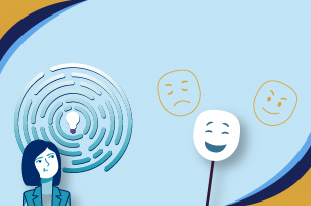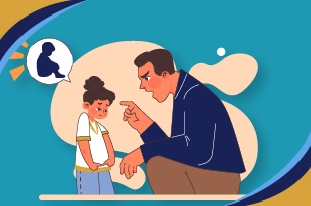It’s important that we find differences and similarities between adjustment disorder and PTSD to finally put an end to the debate of adjustment disorder vs PTSD. We’ll also try to answer questions such as, “Can adjustment disorder turn into PTSD?” or anything along those lines. But before we get into all that, we are going to try and understand each of these mental ailments separately first.
Understanding PTSD
Also known as Post Traumatic Stress Disorder, it is a mental condition that stems from someone experiencing a traumatic event. The traumatic event may be life-threatening or pose a significant threat to your physical, emotional, or spiritual well-being and is capable of affecting people of all ages. These traumatic events are persistent and at times can be prolonged but can also be categorized into these:
- Serious accidents or collisions
- Severe injury.
- Major illness.
- War.
- Natural disasters
- Physical abuse.
- Verbal abuse.
- Sexual abuse.
- Bullying.
- Bereavement.
When PTSD occurs within the first month after experiencing a traumatic event, then it is considered to be acute stress disorder where the symptoms are not as persistent or severe as the usual PTSD. People can also have Complex PTSD, which is essentially PTSD with extensive issues like bad emotion regulation, poor sense of self, and unstable relationships, where the symptoms are similar to PTSD but are more severe and excessively long-term in terms of debilitation such as:
- Intrusive thoughts, such as repeated, involuntary memories.
- Flashbacks of the traumatic event can be very vivid and feel real.
- Avoidance behavior
- Changes in thinking and mood
- Changes in arousal and reactivity
- Irritability and angry outbursts
Read More: Understanding Adjustment Disorder In Children: Causes, Signs, And Treatment
Understanding Adjustment Disorder
Just like understanding PTSD, it is important that we understand the difference between PTSD and adjustment disorder. The definition of adjustment disorder can help you do that. Adjustment disorder is a strong emotional or behavioral reaction to stress or trauma that is capable of causing short-term symptoms that may make you respond with exaggerated reactions. You may cry easily or feel depressed and hopeless. An affected individual can overindulge in risky behaviors, or act recklessly or impulsively. The behaviors and feelings may vary from individual to individual. At times one trigger is enough to cause this mental condition but sometimes, multiple and prolonged triggers are needed to cause this kind of mental condition. Additionally, there are multiple types of adjustment disorders that may be able to help you understand the debate of adjustment disorder vs PTSD:
- Adjustment disorder with depressed mood
- Adjustment disorder with anxiety
- Adjustment disorder with mixed anxiety and depressed mood
- Adjustment disorder with disturbance of conduct
- Adjustment disorder with mixed disturbance of emotions and conduct
- Adjustment disorder unspecified where physical symptoms such as headaches, body aches, stomach aches, heart palpitations, or insomnia are present
These are the causes and symptoms associated with adjustment disorder which can help you answer questions like “Is PTSD an adjustment disorder?”, and “Can adjustment disorder turn into PTSD?”

Common symptoms of the adjustment disorder are:
- Depression
- Trouble concentrating
- Impulsive and reckless behavior
- Anxiousness
- Easily agitated
- Irregular Heartbeat
- Sleep issues
These are the causes associated with adjustment disorder:
- Bereavement
- A major medical diagnosis
- Unfulfilled emotional or physical needs
- Financial problems
- Retirement
- Marriage or having a baby
- Poor performance at work or school
- Relationship issues
Hopefully, all of this information can help you find answers to a question like, “Can PTSD and adjustment disorder be diagnosed together?”
Read More: The Hidden Mental Scars of Childhood Trauma in Adults
The Difference Between PTSD and Adjustment Disorder
There are key differences between PTSD and adjustment disorder and that can help understand the backstory behind the debate of adjustment disorder vs PTSD. But looking at the table below, perhaps you can understand these two ailments fully.
| Differences | Adjustment Disorder | PTSD |
| Triggers | Multiple triggers such as the end of a marriage or relationship, accident, illness, or other major life or environmental changes | A major traumatic event that is severe and prolonged |
| Time Frame | Acute disturbances last for a period of less than six months. | PTSD is known to last for years or until someone seeks professional therapy |
| Severity | While a serious condition, its stressors are considered to be less intense than PTSD | Sufferers of PTSD have very intense symptoms and may relive their traumatic event that occurred persistently |
| Trauma focus | Can take multiple events to be caused, including the traumatic ones | Can be caused by one single traumatic event |
PTSD vs Adjustment Disorder: Overlapping Symptoms
When it comes to diagnosing adjustment disorder vs PTSD, both can be challenging, especially when it is a case of comorbidity. This can make the already difficult job of answering a question like, “Can PTSD and adjustment disorder be diagnosed together?” more difficult. The similarities between both of the mental conditions can mask each other’s symptoms just like the difference between adjustment disorder and PTSD. While You suffer from adjustment disorders that have accompanying issues, such as anxiety, depression, or disturbed conduct, it can also mean you might have PTSD or just have PTSD, not adjustment disorder when you have symptoms such as the ones below overlapping.
Overlapping symptoms make diagnosis difficult and can include:
- Difficulty sleeping
- Anxiety
- Depression
- Feeling of hopelessness
- Being overwhelmed
- Emotional distress
- Difficulty concentrating
- Avoidance or withdrawal
Proper and long-term analysis is needed for accurate diagnosis. Accurate diagnosis is paramount because all of these overlapping symptoms tend to intensify and increase in frequency and severity with comorbidity, which can make the debate of adjustment disorder vs PTSD all the more confusing.
Read More: Can Anxiety Disorder Cause High Blood Pressure? Insights About The Connection
Can Adjustment Disorder Turn Into PTSD?
When compared to PTSD, adjustment disorder is less intense in response. Enough research does not supply enough evidence of the disorder turning into PTSD, but the exaggerated reactions may evolve into:
- Depression
- Anxiety disorder
- Long-term adjustment disorders
- The increased risk of substance abuse due to adjustment disorders
Treatment For Adjustment Disorder vs PTSD
While treatment should be for both adjustment disorder and PTSD, a bit of adjustment disorder vs PTSD in terms of treatment should be incorporated, where treating these individually might help in treating one, it might cause the other one to vanish as a result. When that doesn’t work, all treatment methods or a combination of these methods can be tested and adjusted accordingly to progression.
Treatment for adjustment disorders and PTSD may include:
Psychotherapy: Talk therapy, like cognitive behavioral therapy, can help you identify and adjust how you respond to a stressor. Individual, family, or group therapy (support groups) may also help. Family therapy is also suggested for treating a child or teenager with both or one of the ailments. In terms of PTSD, it can help focus on changing painful negative emotions (like shame and guilt) and beliefs due to the trauma and helping resolve these emotions.
Exposure Response Prevention (ERP): A type of CBT, ERP uses repeated, detailed imagining of the trauma or progressive exposures to symptom triggers in a safe, controlled way. This helps you face and gain control of fear and learn to cope, so the power triggers for both PTSD and adjustment disorder.
Trauma-focused CBT: Another one of CBTs, this one can be used for seeing and analyzing how your body responds to trauma and stress, which can work well with both adjustment disorder and PTSD.
Medications: Medications can help if you feel depressed, anxious or you’re having trouble sleeping but the type of medication suitable for you varies based on your symptoms. Anti-anxiety medications (benzodiazepines) or Antidepressant medications (selective serotonin reuptake inhibitors or serotonin and norepinephrine reuptake inhibitors) work well with adjustment disorder and PTSD.
Read More: Understanding Episodic Acute Stress: Causes, Symptoms, And Management
Conclusion: Can you have PTSD and Adjustment disorder?
It is not a question of adjustment disorder vs PTSD but more of an adjustment disorder and PTSD and masking each other’s symptoms. That is where the issue lies! For that, proper and suitable treatment is needed. For that, our experts at Orange Coast Psychiatry can ensure that you get the resources needed and will also help answer questions like, “Is PTSD an adjustment disorder?”, or “Can adjustment disorder turn into PTSD?”.


















